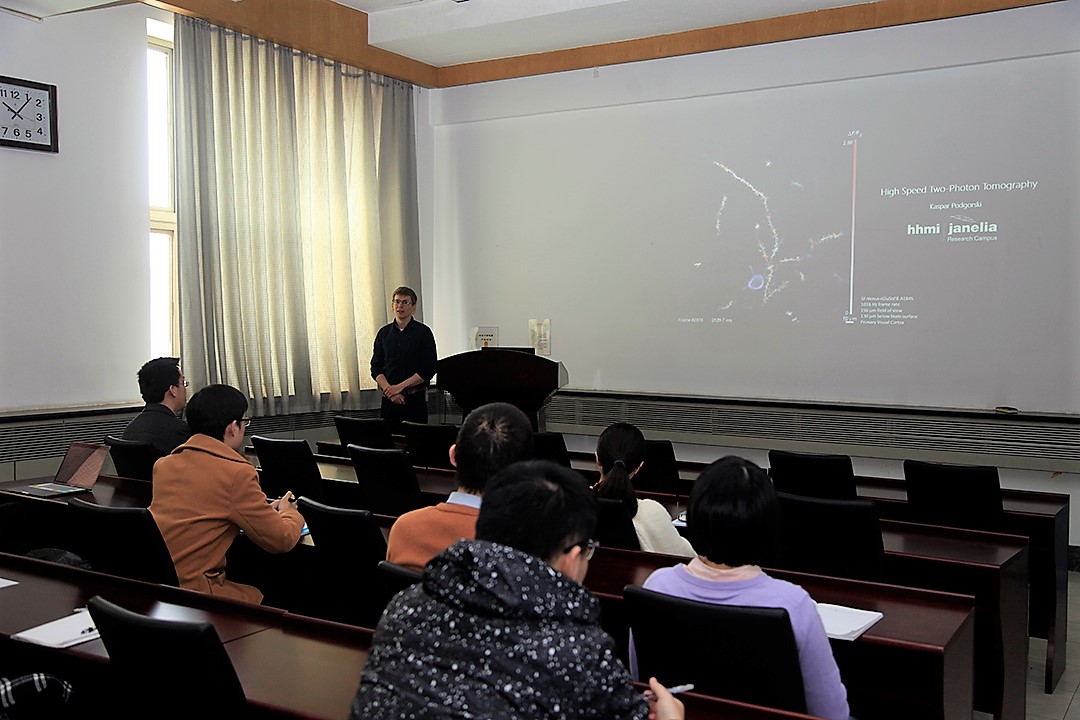
Personal Profile
Kaspar Podgorski is a fellow at HHMI/Janelia Research Campus. His goal is to peer into the brain and see how a neuron processes information. As an undergraduate (2004-2008) he studied Artificial Intelligence, Neuroscience, and Cognitive Science at the University of Toronto. In 2009 he joined the lab of Kurt Haas at the University of British Columbia, working on tools for what we would come to call ‘comprehensive imaging: imaging synaptic activity throughout the entire dendritic arbor of a neuron at high speed. In winter 2013-2014 hevisited Mark Schnitzer’s group at Stanford, developing techniques for in vivo imaging in mice. In 2015, he joined Janelia, where his lab is developing methods for comprehensive imaging of neurons in mouse cortex
Abstract
I will discuss new methods we are developing for kilohertz frame-rate fluorescence imaging in scattering brain tissue, optimized for recording fast signals associated with neural computation, such as neurotransmitters and voltage spikes. We developed a tomographic two-photon microscope that scans lines of excitation across a focal plane at multiple anglesand uses computation to recover high-resolution images at voxel rates of over 1 billion Hz. We have used this microscope to image new sensors for acetylcholine, glutamate, GABA, and voltage in vivo. The method is about 15 times faster than a fundamental limit on the speed ofraster scanning two-photon imaging.